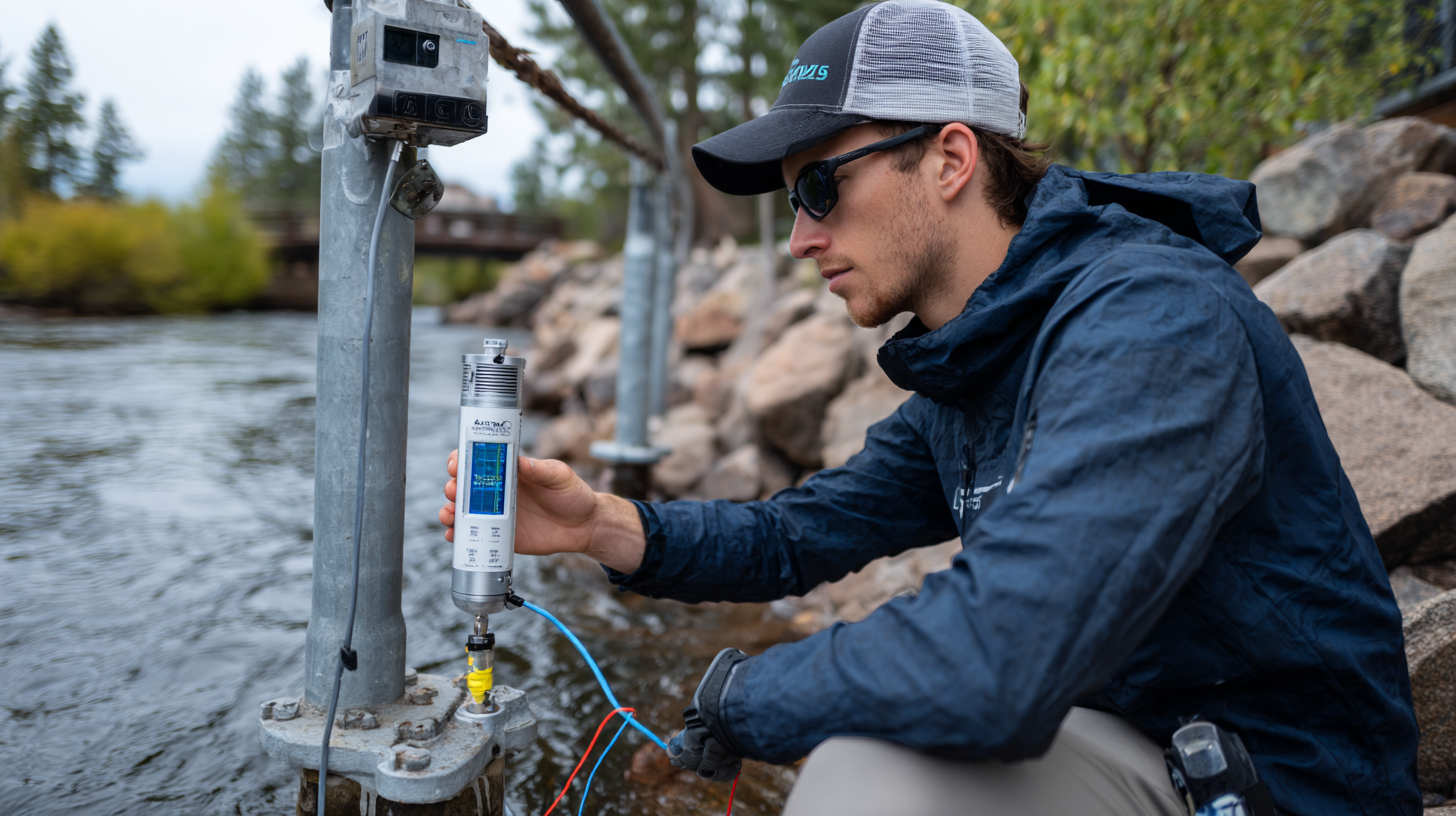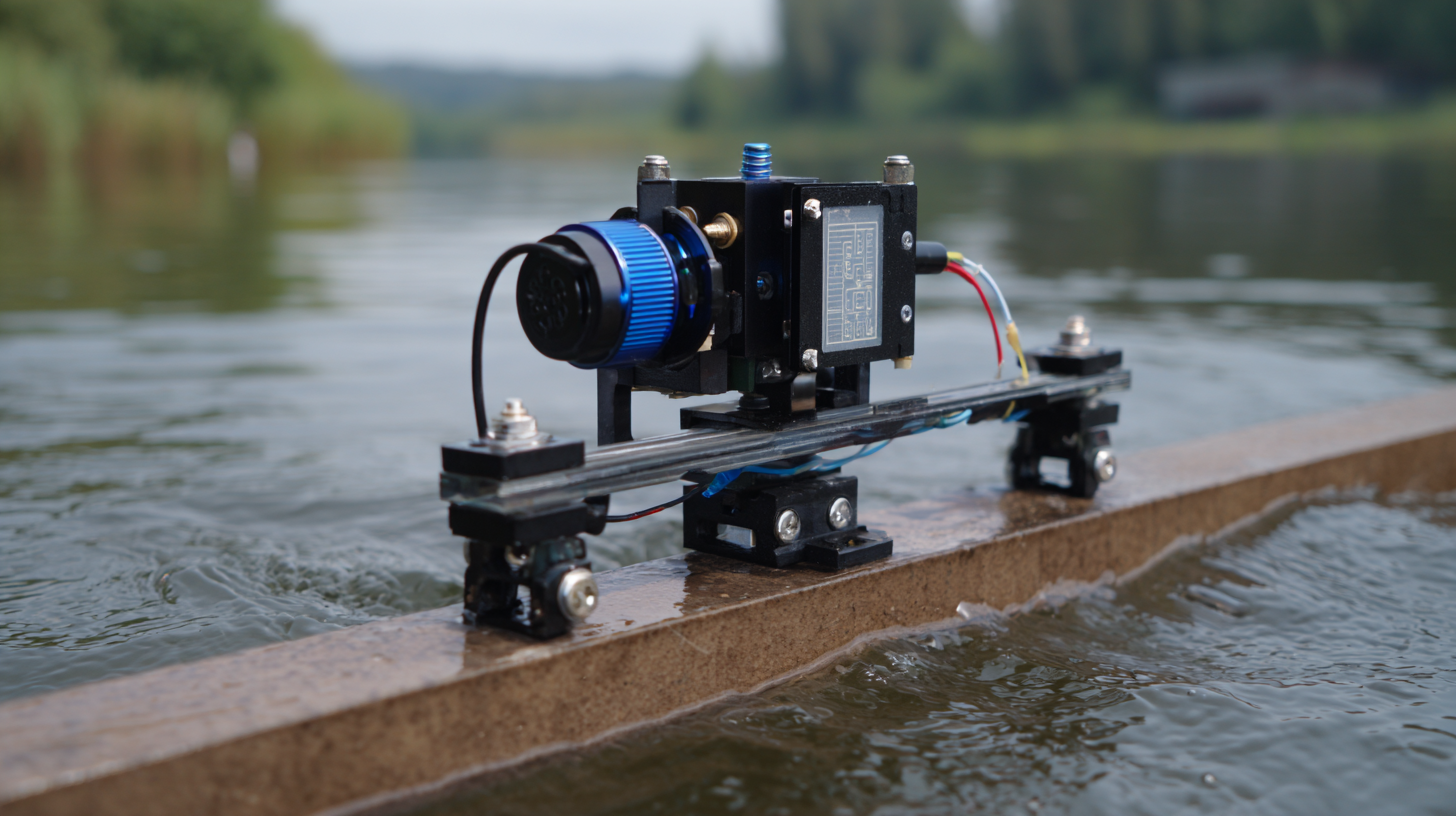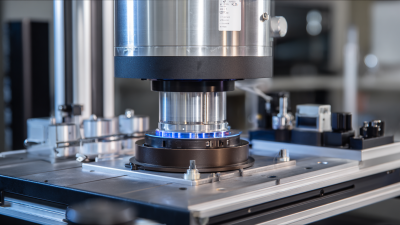Exploring the Future of Water Quality: How Conductivity Sensors Enhance Environmental Monitoring
As the world faces increasing challenges related to water quality, the need for advanced monitoring technologies has become more pressing than ever. According to the Global Water Quality Monitoring Report, poor water quality affects over 2 billion people globally, highlighting the critical need for reliable and efficient solutions.
 Conductivity sensors, which measure the electrical conductance of water, play a vital role in real-time environmental monitoring and management. These sensors enable the detection of various dissolved substances, providing invaluable data on salinity, pollutants, and overall water quality.
Furthermore, a study by the International Water Association reports that the integration of conductivity sensors into monitoring networks can enhance detection capabilities by up to 40%, underscoring their significance in safeguarding water resources.
As we explore the future of water quality monitoring, the role of conductivity sensors will be pivotal in ensuring sustainable management practices and protecting aquatic ecosystems.
Conductivity sensors, which measure the electrical conductance of water, play a vital role in real-time environmental monitoring and management. These sensors enable the detection of various dissolved substances, providing invaluable data on salinity, pollutants, and overall water quality.
Furthermore, a study by the International Water Association reports that the integration of conductivity sensors into monitoring networks can enhance detection capabilities by up to 40%, underscoring their significance in safeguarding water resources.
As we explore the future of water quality monitoring, the role of conductivity sensors will be pivotal in ensuring sustainable management practices and protecting aquatic ecosystems.
Digital Transformation in Water Quality Monitoring
The digital transformation in water quality monitoring is fundamentally reshaping how we understand and manage our water resources. With the adoption of advanced technologies such as conductivity sensors, real-time data collection has become not just possible but essential. According to a report by the International Water Association, integrating digital tools can improve water quality monitoring efficiency by up to 30%, enabling quicker responses to potential pollution incidents.

Conductivity sensors play a critical role in this technological shift. They allow for continuous monitoring of water quality, providing vital insights into the ionic strength and salinity of water bodies. This information is crucial for assessing the health of ecosystems and for ensuring compliance with environmental regulations. A study from the U.S. Environmental Protection Agency highlights that using real-time sensors can lead to a reduction in water quality monitoring costs by approximately 20% compared to traditional methods, while also enhancing the accuracy of data collection.
As environmental challenges grow, the need for effective monitoring tools becomes ever more pressing. The ability to digitize and enhance water quality assessments not only supports regulatory compliance but also fosters community engagement and better resource management. Investing in these technologies is no longer just an option; it's a necessity for sustainable water management in the face of climate change and urbanization.
The Role of Conductivity Sensors in Environmental Analysis
Conductivity sensors play a pivotal role in environmental analysis by providing real-time data on water quality. These devices measure the ability of water to conduct an electric current, which is directly related to the concentration of ions present in the water. According to a 2022 report by MarketsandMarkets, the global market for conductivity sensors is projected to grow at a CAGR of 7.5%, indicating an increasing demand for these sensors in various applications, including environmental monitoring. This surge can be attributed to the urgent need for accurate and efficient tools to analyze water bodies affected by pollution and climate change.
In environmental analysis, conductivity sensors are instrumental in identifying changes in water chemistry that may indicate contamination or shifts in ecosystem health. For instance, a study published by the Environmental Protection Agency (EPA) highlighted that monitoring conductivity levels can be essential for tracking saltwater intrusion into freshwater systems, which is a growing concern in coastal areas. Additionally, these sensors are effective in assessing agricultural runoff, with research revealing that elevated conductivity levels often correlate with nutrient loading. Utilizing conductivity sensors thus empowers researchers and environmental agencies to make informed decisions, ensuring the protection and sustainability of aquatic ecosystems.
Exploring the Future of Water Quality: How Conductivity Sensors Enhance Environmental Monitoring
| Parameter | Units | Typical Range | Impact on Water Quality |
|---|---|---|---|
| Conductivity | µS/cm | 50 - 2000 | Indicates the concentration of dissolved ions |
| pH Level | pH units | 6.5 - 8.5 | Affects biotic and abiotic interactions |
| Total Dissolved Solids (TDS) | mg/L | 300 - 1500 | Indicates overall water quality |
| Salinity | g/L | 0.5 - 35 | Affects aquatic life sustainability |
| Temperature | °C | 1 - 35 | Influences solubility and metabolic rates |
Benefits of Real-Time Data Collection for Water Quality
Real-time data collection has become a cornerstone of effective water quality monitoring, particularly through the use of conductivity sensors. These devices provide crucial insights into the ionic content of water, which can indicate the presence of contaminants. According to a report by the Environmental Protection Agency (EPA), real-time monitoring can reduce response times by up to 50%, allowing for swift action against pollution events. This rapid assessment is vital for preserving aquatic ecosystems and ensuring safe drinking water supplies.
The benefits of real-time data collection extend beyond immediate responses. For instance, a study published in the Journal of Environmental Monitoring highlighted that continuous data from conductivity sensors enables the identification of long-term trends in water quality. This data is invaluable for water resource managers who can proactively address issues stemming from agricultural runoff or industrial discharges. Furthermore, real-time data enhances collaboration among stakeholders, as communities can access up-to-date information to inform their decisions regarding water use and conservation efforts. By leveraging these advanced sensors, we can ensure a more sustainable and responsible approach to managing our precious water resources.
Water Quality Analysis: Conductivity Measurements Over Time
This chart illustrates the conductivity levels of water samples collected over a period of one week. The real-time data collection demonstrates how conductivity sensors enhance our understanding of water quality by providing timely insights into environmental conditions.
Integrating AI with Conductivity Sensors for Enhanced Monitoring
The integration of artificial intelligence (AI) with conductivity sensors is revolutionizing the field of environmental monitoring. Conductivity sensors, essential for measuring the ionic content of water, provide real-time data on water quality. When combined with AI algorithms, these sensors can analyze complex datasets far more efficiently than traditional methods. Machine learning models can identify patterns and anomalies in conductivity readings, enabling predictive maintenance and immediate alerts for pollution events, thus allowing for a proactive approach to water management.
Moreover, AI-enhanced conductivity sensors can adapt to varying environmental conditions, improving their accuracy and reliability. By utilizing vast datasets from multiple sensors across different locations, AI can develop predictive models that simulate water quality changes based on various factors—such as weather patterns, industrial discharges, or seasonal shifts. This integration not only streamlines the monitoring process but also provides stakeholders with actionable insights, empowering them to make informed decisions regarding water resource management and pollution control. The future of water quality monitoring lies in this synergy, paving the way for sustainable environmental stewardship.
Best Practices for Utilizing Conductivity Data in Environmental Science
Conductivity sensors play a crucial role in environmental monitoring, particularly in understanding water quality within various ecosystems. By measuring the electrical conductivity of water, these sensors provide insights into the ion concentration and overall salinity levels, which are essential indicators of ecological health. Recent advancements suggest that integrating real-time conductivity data can enhance our understanding of water dynamics in both surface and groundwater systems, benefiting initiatives aimed at sustainable water management.
For instance, the implementation of smart monitoring networks for groundwater, such as those successfully developed in regions of China, illustrates how technology can improve data collection and sharing. These systems gather data on conductivity, along with other parameters, facilitating better decision-making and risk management concerning water safety. According to the International Water Management Institute, approximately 70% of freshwater withdrawals are used for agriculture, making it imperative to monitor water quality intimately to ensure sustainable practices and mitigate risks associated with pollution or over-extraction.
Moreover, the development of innovative water quality sensors enables precise measurement of various attributes, including pH, dissolved oxygen, and temperature, alongside conductivity. This multifaceted approach equips researchers and policymakers with comprehensive data necessary for effective ecosystem management, ensuring safe and clean water resources for future generations. Investments in such monitoring technology are critical, as they can lead to improved accuracy in water quality assessments, directly impacting public health and environmental sustainability.

Related Posts
-

Unlocking Opportunities in Conductivity Measurement at the 2025 China Import and Export Fair Industry Insights and Trends
-

How to Choose the Right Equipment for Thermal Conductivity Testing
-

Understanding How Temperature Probe Sensors Revolutionize Home Cooking and Food Safety
-

How to Choose the Right Pyranometer Sensor for Your Solar Energy Project
-

7 Best Materials with Exceptional Thermal Conductivity You Should Know
-

How to Optimize Your Energy Production with Effective PV Monitoring Strategies







